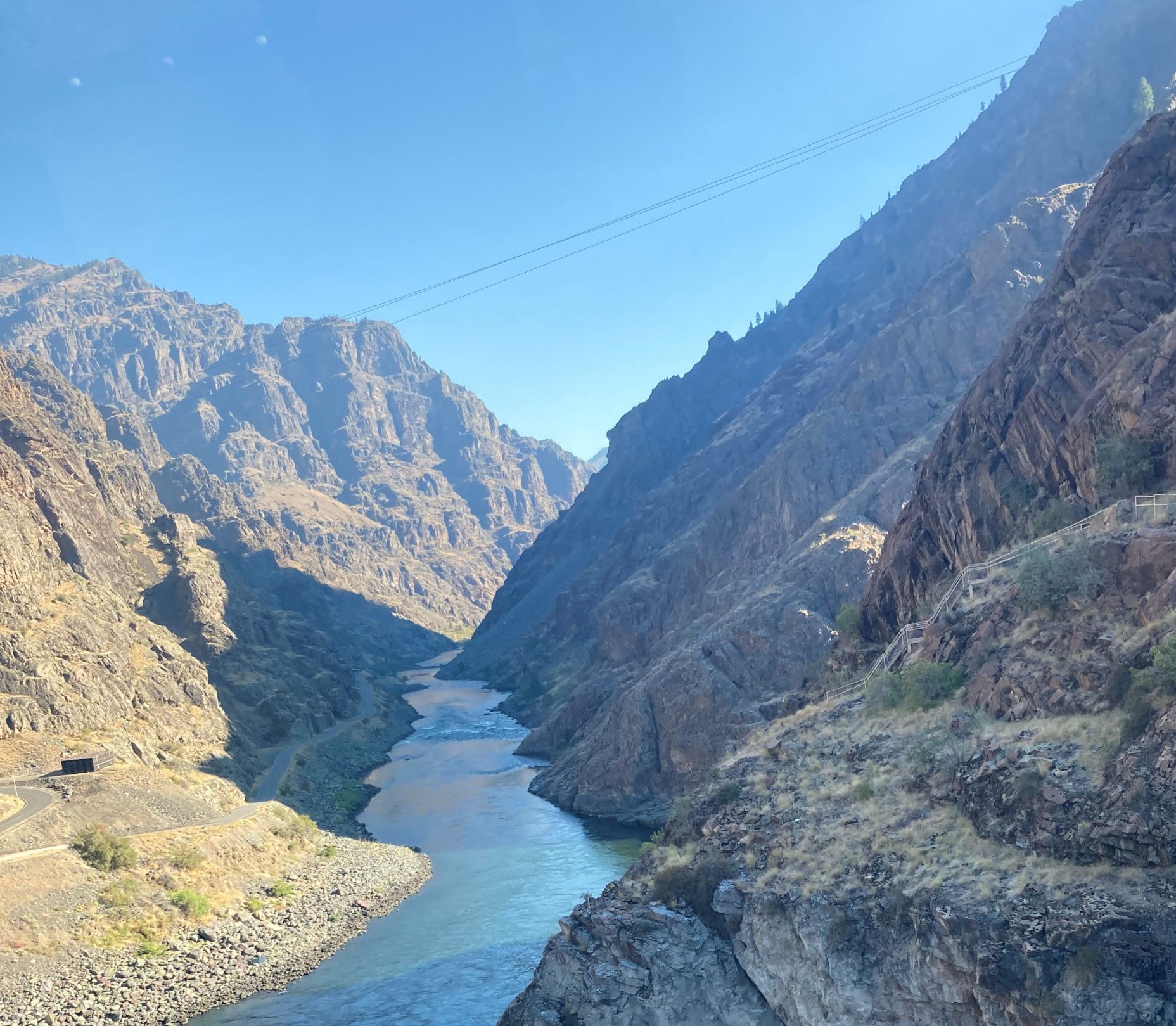It is not death that a man should fear, but he should fear never beginning to live.
-Marcus Aurelius
The night before my plane was to leave Boston, I dropped Waldo off with Laurian, our dog sitter. Waldo was happy to see her, it was a year and a half since the last time I left him with her, and I know he will be in good hands. No kennel cage for Waldo. Nope. He will have the run of the house, a back yard and the friendship of other pooches Laurian is watching. I give him a pet, a pat, a short hug and he’s off to cavort.
The trip to Cambridge, Idaho, where we would meet our river guides, is fraught with the usual air travel issues, now exacerbated by Covid. But after late flights, causing running between gates in Seattle and delayed baggage in Pullman, we finally get everyone and their stuff together and drive four hours to Cambridge. The plan was to meet up with the guides at about 6:30 PM the night before we would put in the river, but, alas, we can’t make it to Cambridge until just after midnight. All the same, at 6:30 AM, we arrive at America’s Rafting Company’s place of business, all our personal gear packed in drybags and ready to go.
Lauren, one of the owners, gives us the requisite orientation to the river. This includes what to do if the raft overturns, if you fall out in a rapids, other safety information, and the admonition that whatever we bring onto the river, we take out. Everything but urine, which we can leave in the river. This includes our solid waste and we are instructed on the etiquette of using a groover – so called because the ammo cans that were originally used for this task would leave grooves on your behind. Our groover will sport a comfortable toilet seat and the box beneath it will be carried, with contents, back off the river by our guides. Leave no trace behind, except your footprints.
ARC provides everything we need, except our personal gear. The guides, Bryce, Keenan, Kevin and Bob, will row the rafts, set up camp, feed us and tell us about Hell’s Canyon and its history. These four guys are in their late twenties, skinny and muscular, sunned to a deep tan and very experienced. Going down the river is all they do all season long (roughly April through October) and they know the river, with its rapids and currents, well. This year’s drought in the west, and the fires that raged through the area, will have little impact on our trip. The local fires have burned out and the water level, although low, is regulated by upstream dams enough so the water flow remains good. Some rapids are better than at higher water levels and some are worse, but there is nothing that can’t be dealt with.
I text Laurian one last time and, fully oriented, the six of us, Bill, Ted, Gary, Ron, Phyllis and I, along with Megan and Chris who joined us in Cambridge, pile into a van and take the two-hour ride down a twisting paved road to Hell’s Canyon Dam. Megan and Chris, aged 34 and 40, respectively, live in nearby Meridian, Idaho, and are taking a well-earned, I’m sure, vacation from their four kids who they left with a sister. We put in just below the dam with four rubber rafts – two for gear and two for us. The rafts are between 14 and 20 feet long and between 6.5 and 7 feet wide. The larger boats are the gear boats. Each guide controls a boat with long oars, positioned in the center of each boat, and oriented in a way so that the guide can row in the direction he’s facing. The purpose of the oars, although constantly in motion, is not so much to propel the boat forward as it is to put the boat in a place on the river where the current will carry us where the guide wants us to go. They are also used to turn the boat so the waves hit us head on, more or less, and not breach us, which could lead to turning the boat over if the wave was big enough.
Everyone is wearing personal flotation devices (PFDs) and nothing we’re not willing to get wet. Some of us do have waterproof clear plastic pouches we can put our phones and cameras in so we can take pictures. I have a pair of waterproof binoculars slung around my neck, a pen and notebook that are supposed to be able to be used under water, and, after tying the drybags holding our personal gear to the boat, we’re good to go. Two of the guides and the gear boats leave first and are quickly out of sight down-river so camp will be set up, including tents and cots, in late afternoon before we arrive. The rest of us climb aboard the remaining two rafts, Phyllis, Ted, Gary and I in one, with Bryce, the others in the remaining raft. We’re positioned two in front and two in the rear, guide in the middle, and we’re off.
Time to get wet!



